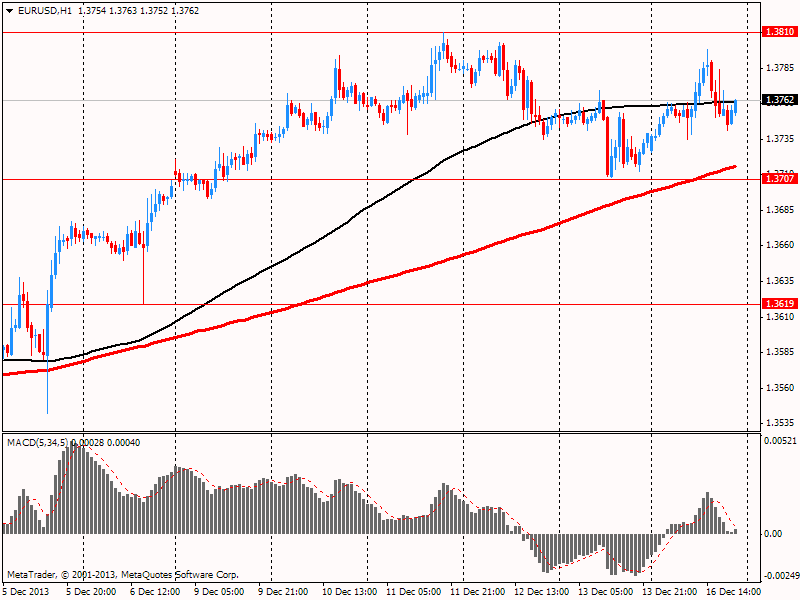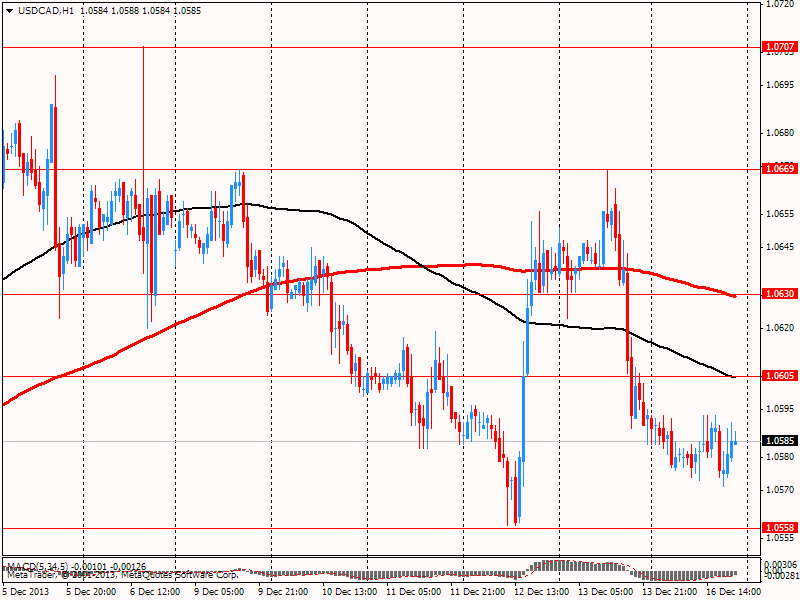- American focus : the euro lost some previously earned positions against the dollar
Market news
American focus : the euro lost some previously earned positions against the dollar
Euro fell against the dollar retreated from a session high , which was associated with the release of U.S. data . One of the reports showed that in December, the index of activity in the manufacturing sector of the Federal Reserve Bank of New York rose to 0.98 , compared to -2.21 in November. According to the average forecast of economists , the value of production index would grow to a level of 4.9 .
In addition, it was reported that in December preliminary index of business activity in the U.S. manufacturing sector Markit PMI showed a slowdown in expansion. The index fell from 54.7 to 54.4 , confounding forecast 54.9 , but kept in the area of expansion over the 50.0 mark key . The slowdown impacted by lower index of new orders component , with new export orders remained unchanged . Employment and procurement prices rose moderately .
No less important were also data on industrial production . They showed that industrial production in the U.S. in November for the first time exceeded the pre-recession peak , which is another sign of renewed growth in the economy.
The volume of industrial production, which includes manufacturing, utilities , mining sector grew by 1.1 % compared with October . This is the highest growth for the year . Capacity utilization rose by 0.8% to 79.0 . Economists had expected industrial production growth of 0.6% and capacity utilization to 78.5% . Industrial Production in October revised to 0.1% . Growth in the manufacturing industry, which is the largest in terms of production , made in November to 0.6%. The largest growth was the automotive industry , followed by textile , oil and coal , wood products ,
The Canadian dollar was trading lower against the U.S. dollar , but has regained some of the previously lost positions . Note that a moderate impact on the couple had data that showed that investments in securities of non-residents of Canada in October totaled $ 4.4 billion and mainly occurred in corporate debt instruments . At the same time , Canadian investment in foreign securities decreased due to the sale of shares in the United States.
Investments of non-residents in Canadian bonds decreased by $ 38 million , mainly a reflection of flow of funds between the bond market and the money market .
Investments of non-residents in Canadian stocks rose to $ 4.5 billion , after rising 10.7 billion in September. Increased investment in stocks continues for six of the last seven months . In September, the shares were acquired mainly in the secondary market . In October the price of Canadian shares rose by 4.5% , reaching a peak in May 2011 with
Foreign investment in bonds in October amounted to $ 6.1 billion , mainly due to new securities denominated in U.S. dollars.
Acquisition of foreign corporate bonds in August was $ 4.7 billion , which includes bonds as private and public companies.
Foreign ownership of government bonds declined. Long-term interest rates in Canada declined in October for the second month in a row.
Investments of non-residents in Canadian money market instruments in October fell by $ 6.2 billion after six months of consecutive growth in the amount of 12.4 billion

